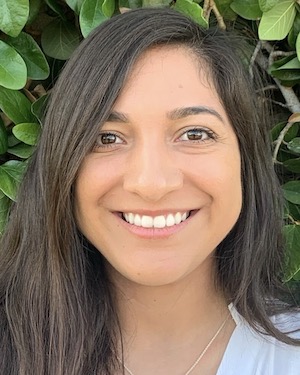Level II Fieldwork Part I: Almost Complete!

March 26, 2021
by Liz
I am so bummed that level II fieldwork is almost over—one week to go! 12 weeks literally flew by. If you read my previous blog post about my level II fieldwork placement, I’ve been having a blast the past 3 months. I can confidently say that I feel prepared to practice in a hand therapy setting! Here’s a little bit of what I’ve learned these past three months:
How to complete an initial evaluation
This is so important y’all. Not only is it key for knowing why the patient is coming in/what their primary complaint is, but it is the first interaction that you have with them. This is your chance to begin creating that relationship. At first I was a little nervous. I was so grateful for masks because it made it that much easier to hide how nervous I felt! But, I’ve done so many initial evals that now it’s a piece of cake. There’s so many important questions to ask: have you had surgery? Any steroid injections? How does this affect your ability to do things every day? Do you currently own a splint? Take measurements as needed. And yes, these are all super important, but so is the impression you make. This will determine how comfortable the patient will feel with—can they trust you?
How to explain to patients what in the world is going on
A lot of times patients will come in and have no clue what’s going on. This is why knowing your anatomy and familiarizing yourself with diagnoses is critical. You also have to keep in mind that patients will not usually know what in the world extensor carpi radialis brevis is. Explain in a way that the patient will actually understand! Practicing this is super helpful for when patients say “what is tennis elbow, I don’t even play tennis!”
Prioritize occupations!
I’ve seen folks who come in post surgery and also those who are trying to take care of their condition conservatively. In both cases, I’ve had people ask if they need to stop doing things they love. In some cases, the goal is to get them back to doing those things. I had a client who fractured one of his carpal bones and hasn’t been able to surf for months. Attempting to surf right now probably wouldn’t be the best idea. But, what we’ve been working on is getting his range of motion back and slowly working towards weight bearing so he can push off on his surfboard, wax it, put on his wetsuit, etc.
Documentation
We learned a little bit about this in the hands electives and in adult rehab as well. This is super important for noting what you did with the patient, how they responded to treatment/modalities, what happened, why do they need to continue coming to OT. This looks differently at each site, but to date I’ve written so many SOAP notes I already lost count! SOAP notes are used in several OT settings. It stands for: Subjective, Objective, Assessment, and Plan. These provide information about what the patient said/what they’re reporting, what you observed/measured as a skilled clinician, why they still need to continue seeing you, how are they progressing?, and what the plan is for the next session. You’ll learned more about this when you practice writing SOAP notes in class. 😊
How to actually treat people
Anyone can Google what a trigger finger is. But, what do you actually do when a client comes in with one? This is when I was super grateful for my fieldwork educator. There’s a reason why practicing in a hands setting is considered advanced practice. There’s so much! There’s a lot to know, and everyone’s conditions may present similarly but also be very different. I’ve had the chance to independently treat so many diagnoses including: trigger fingers, wrist fractures, Dupytren’s contractures, carpal tunnel, rheumatoid arthritis, osteoarthritis, cubital tunnel, tennis elbow and even a couple folks who have had amputations—to name a few. I am very happy to say that I’ve felt completely comfortable treating these conditions.
Splints 101
Making splints is tough y’all! It is literally art. For one, there’s different materials to choose from. Some cool faster than others, some are more comfortable for night wear, others are more restrictive. I had the chance to make a couple short opponens splints and a few trigger finger splints as well. My fieldwork educator has so much experience and I’ve seen him create some amazing splints for different people. Making splints is great, but with that comes some client education. Can they bathe with it? Should they sleep with it? Skin checks! Tip #1: Don’t leave it in your car—it might lose its shape with the heat!
Being confident in myself
It’s okay to not know everything. It’s literally been only three months! At first it was rough to come to terms that I wasn’t an expert. But, now that I’ve really got the hang of everything I am so sad that this placement is coming to an end! I’ve learned that it’s okay not to know everything and asking questions is fine. My fieldwork educator once told me, “You might not know it all, but you definitely know more than the patient so believe in yourself”.
So, this is all just a fraction of what I’ve learned so far. After nearly a year of learning from behind a screen, I am so grateful for this experience. It exceeded my expectations of what level II fieldwork would be like. If you have any questions about my placement or want to know more about my experience please feel free to shoot me an email!
⋯
Next by tag Fieldwork ⟩
⋯





